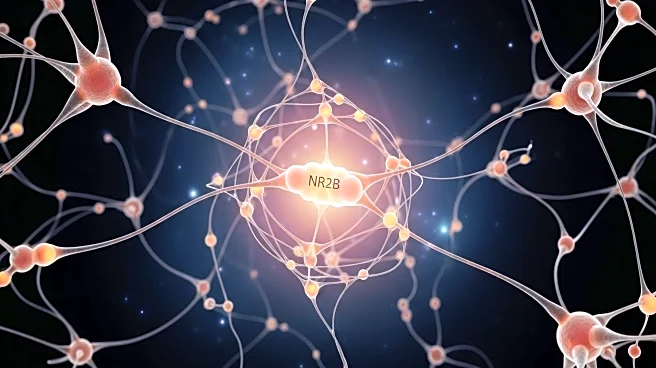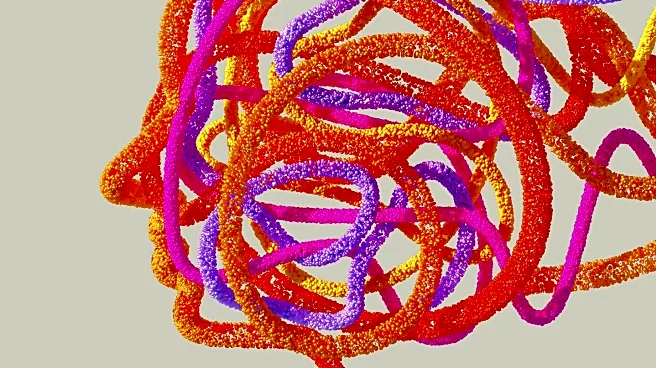What is the story about?
What's Happening?
A recent study published in Nature investigates the role of the blood-brain barrier (BBB) in Alzheimer's disease (AD) progression. The research focuses on the transport and clearance of amyloid-beta (Aβ) peptides, which are known to accumulate in the brains of AD patients. The study highlights the involvement of the low-density lipoprotein receptor-related protein 1 (LRP1) in mediating Aβ transport across the BBB. Using a combination of enzyme-linked immunosorbent assay (ELISA) and imaging techniques, researchers observed that LRP1 expression decreases with age, leading to impaired Aβ clearance. This reduction in LRP1 activity is associated with increased Aβ accumulation, which may exacerbate AD pathology. The study also explores the potential of using multivalent LRP1-targeted nanoparticles to enhance Aβ clearance, showing promising results in reducing Aβ levels in the brain and improving cognitive function in AD mouse models.
Why It's Important?
The findings of this study are significant as they provide insights into the mechanisms underlying AD progression and highlight potential therapeutic targets. The role of the BBB in Aβ clearance is crucial, as impaired clearance can lead to increased Aβ deposition, a hallmark of AD. By identifying LRP1 as a key player in this process, the study opens avenues for developing treatments that enhance Aβ clearance, potentially slowing or reversing AD progression. The use of multivalent nanoparticles targeting LRP1 could represent a novel therapeutic strategy, offering hope for improved outcomes in AD patients. This research underscores the importance of understanding the molecular and cellular mechanisms of AD to develop effective interventions.
What's Next?
Future research will likely focus on further validating the efficacy of LRP1-targeted nanoparticles in clinical settings. Additionally, exploring the long-term effects of such treatments on cognitive function and AD progression will be crucial. Researchers may also investigate other potential targets within the BBB that could enhance Aβ clearance. Collaboration between neuroscientists, pharmacologists, and clinicians will be essential to translate these findings into viable therapies for AD patients. As the understanding of BBB dynamics in AD deepens, it may lead to the development of comprehensive treatment strategies that address multiple aspects of the disease.
Beyond the Headlines
The study raises important ethical and regulatory considerations regarding the use of nanoparticles in medical treatments. Ensuring the safety and efficacy of such interventions will be paramount, requiring rigorous testing and adherence to regulatory standards. Additionally, the research highlights the need for personalized medicine approaches, as individual variations in BBB function and Aβ metabolism may influence treatment outcomes. The potential for nanoparticles to cross the BBB and deliver targeted therapies could revolutionize the treatment of neurological disorders, but it also necessitates careful consideration of potential risks and benefits.
AI Generated Content
Do you find this article useful?













